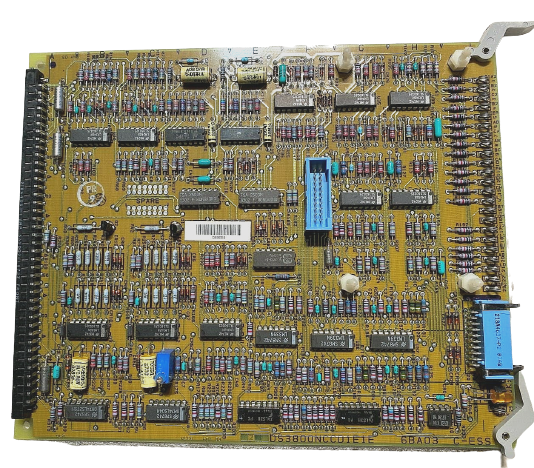SPECIFICATIONS
Part Number: DS3800NCCD
Manufacturer: General Electric
Series: Mark IV
Function: Analog Protective board
Product Type: PCB
Number of channels: 12
Operating temperature: -30 to 55 degrees Celsius
Size: 8.25 cm high x 4.18 cm
Repair: 3-7 Day
Availability: In Stock
Country of manufacturer: United States (USA)
Functional Description
DS3800NCCD is an Analog Protective board designed and developed by GE. It is a part of mark IV control system. It serves as an important component of the system, providing critical protection and monitoring functions.
Features
- The board is capable of monitoring a wide range of analog signals, including current, voltage, temperature, and pressure. It can detect anomalies in these signals and initiate protective measures to prevent any damage to the system.
- The board is designed to withstand extreme temperatures, vibration, and shock, ensuring its reliable operation even in challenging conditions. Additionally, the board is designed with a robust enclosure that protects it from dust, moisture, and other environmental hazards.
- Critical sensors are distributed throughout RST so that each section can independently assess turbine condition. For example, thirteen exhaust thermocouples are distributed as follows: four to R, five to S, and four to T. Each of these sections sends its values to C, which computes and returns the median value to RST. As a result, under normal circumstances, the turbine will be controlled by the median of thirteen thermocouples. If something goes wrong, each section of RST can make its own independent decision about how to limit the fuel.
Product Attributes
- Overvoltage Protection: This feature helps prevent damage caused by excessive voltage levels. It can include transient voltage suppressors (TVS), varistors, or voltage clamping circuits to limit voltage spikes or surges.
- Overcurrent Protection: To protect against excessive current, analog protective boards may include fuses, circuit breakers, or current-limiting components such as resistors or PTC (positive temperature coefficient) thermistors.
- ESD Protection: Electrostatic discharge can pose a significant risk to sensitive analog components. ESD protection circuitry, such as ESD diodes or TVS diodes, is often implemented to divert the potentially damaging discharge away from the sensitive components.
- EMI Filtering: Electromagnetic interference can introduce noise into analog circuits, affecting their performance. Analog protective boards may incorporate EMI filters or shielding techniques to minimize the impact of external electromagnetic disturbances.
- Signal Conditioning: Analog protective boards may include signal conditioning circuitry to ensure the input signals are properly adjusted and conditioned before reaching the sensitive analog components. This can involve amplification, filtering, or impedance matching.
- Grounding and Isolation: Proper grounding and isolation techniques are crucial for maintaining signal integrity and reducing interference. Analog protective boards may provide grounding points, isolation barriers, or shielding to separate analog components from noise sources.
- Thermal Management: Heat dissipation is an important consideration in analog circuits. Analog protective boards may incorporate heat sinks, thermal pads, or cooling mechanisms to prevent overheating and ensure stable operation.
WOC has the largest stock of Speedtronic Mark IV control spares. Our team of experts is available round the clock to support your Mark IV needs.
FREQUENTLY ASKED QUESTIONS
What is DS3800NCCD?
It is an Analog Protective board developed by GE
How does the C module process the data from the thermocouples, and what does it do with the results?
The C module receives the values from each section's thermocouples and computes the median value. It then returns this median value to RST, which uses it to control the turbine.
What is the purpose of distributing critical sensors throughout RST in the context of a turbine control system?
The purpose of distributing critical sensors throughout RST in a turbine control system is to enable each section to independently assess the turbine's condition. This allows for a more comprehensive and accurate assessment of the turbine's overall health, which can help prevent damage and downtime.
